




Why Drawing Circles Perfectly Matters in Maths and Geometry
You all play with a ball. What is the shape of the ball? Is it circular or something else? Yes, right, it’s circular. What is this circle? A circle is a closed, curved object with two dimensions in geometry. A circle is a sphere with no edges or bounds. A circle is also known as the location of points that are evenly spaced apart from the centre. In this article, we will learn to draw a circle and understand what things are needed to draw a circle.
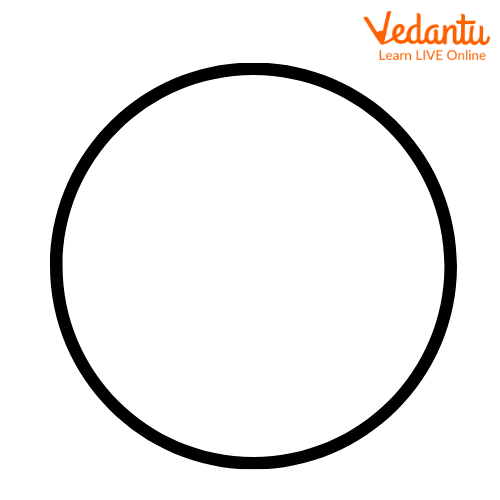
A Circle
Examples of Circular Shape
A car tire, a time-telling wall clock, and a lollipop are a few objects in our immediate environment that have a circular form.
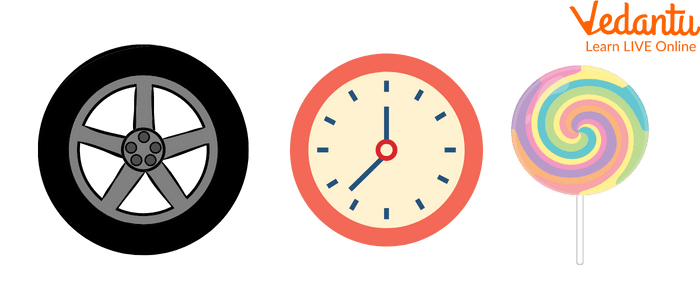
Circular Shapes
Parts of Circle and Things to Draw in a Circle
The Radius of a Circle: The circle's radius is a segment of a line having one terminus in the centre and the other on the circle.
The Diameter of a Circle: The diameter of a circle is defined as the length of a line segment with its endpoints on the circle and passing through its centre.
Circumference: The distance encircling a circle is its circumference. The perimeter of other forms is the same.
Circles' Chords: The chord of the circle is a line segment whose endpoints are on a circle. A circle's largest chord is its diameter.
Arc of a Circle: An arc is a section of a circle, with all of its points falling within the circle. It has a curvature that runs the length of it. A semicircle is an arc measuring 180° that connects the diameter's endpoints.
The Secant of a Circle: A line that precisely intersects a circle at two places is said to be its secant.
Tangent of a Circle: A line that precisely crosses a circle at one point is said to be a tangent.
Circle Segments: A circle's chord divides the circular area into two sections. The term "circular segment" refers to each component.
Sector of a Circle is a circular region with an arc serving as one of its boundaries and two radii enclosing it.
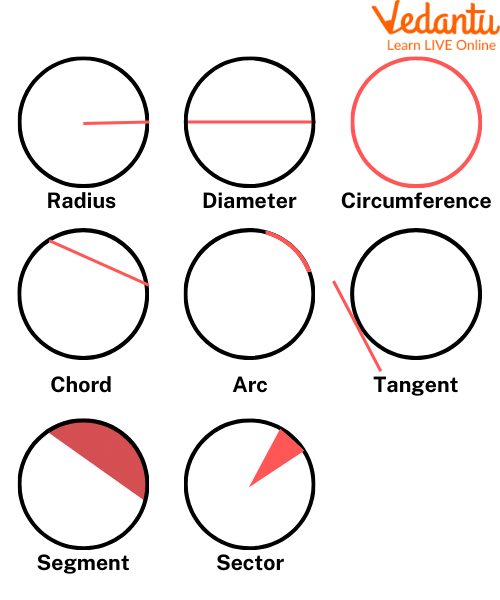
Parts of a Circle
How to Draw a Circle?
We use an instrument to draw circles. This instrument is known as a compass. Two legs make up a compass. Its legs are long on one and short on the other. The pointed end of the lengthy leg resembles a needle. A pencil can be inserted into the little pipe-like holder on the short leg. By pulling apart the compass's two legs and setting the distance between the pencil tip and needle end to equal the circle's radius, you may use it to draw circles (say 2 cm). So, drawing a circle is an easy process.
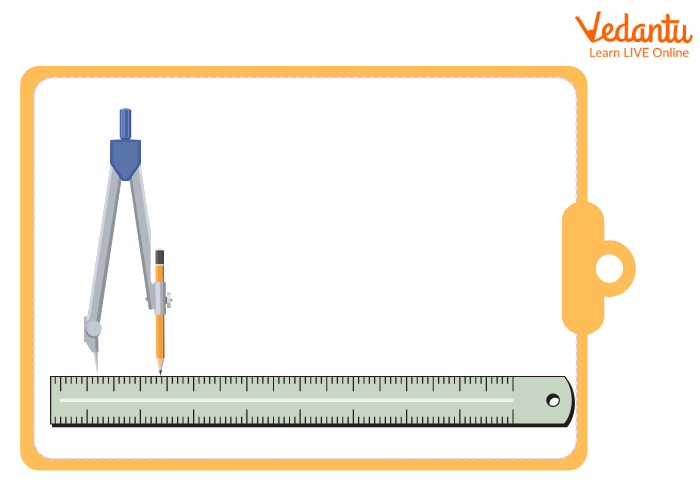
Compass
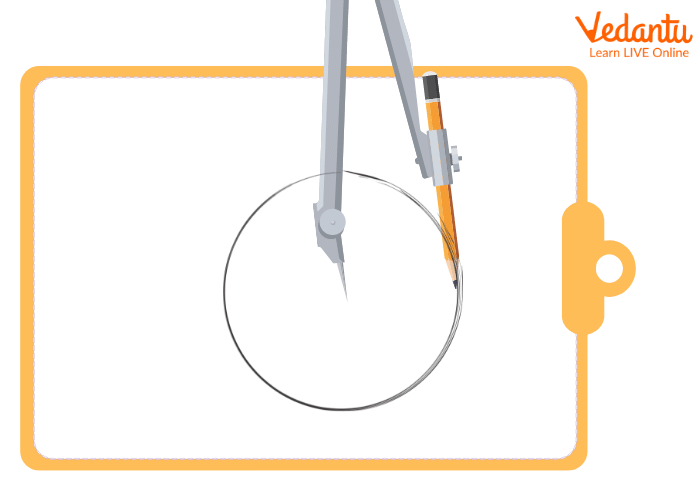
Circle Needle
How to Draw a Radius?
Example:
Create a circle with a 2.5 cm radius.
Step 1: Determine the radius or diameter of the circle at the specified value.
r = 2.5 cm
D = 5 cm
$r = \dfrac{D}{2}$
$= \dfrac{5}{2}$
= 2.5 cm
Step 2: Determine the radius from the expression if the diameter is known. The compass arms should be adjusted to the circle's radius. Turn the pencil arm 360 degrees on the paper while the needle is positioned in the circle's centre. You'll receive the circle with the specified radius.
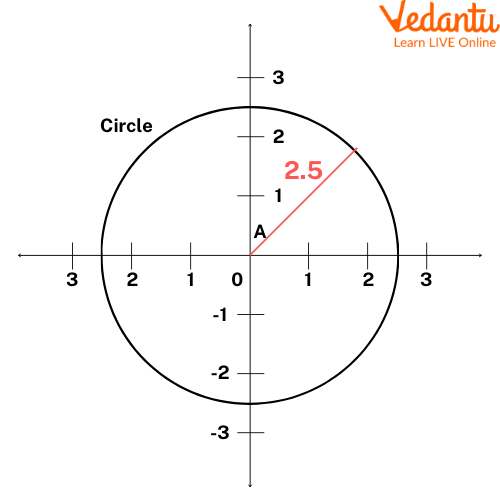
Radius
How to Draw a Circle Without a Compass?
Any circular object will serve to draw a circle. A round glass, the base of a candle, a pair of bangles, or a circle of paper can all be used. Make certain the rounded edge is only smooth.
Solved Examples
Q 1. What is the length of a circle's longest chord if its radius is 3 cm?
Ans: The circle's diameter is represented by its longest chord.
Diameter $=2 \times$ radius
$=2 \times 3$
$=6 \mathrm{~cm}$
Q 2. A circular clock's minute hand measures 14 cm in length. How far does the tip travel in one hour?
Ans: The length travelled in a single hour equals the circle-shaped clock's circumference.
$\text { Circumference }=2 \pi r$
$= 2 \times \dfrac{22}{7} \times 14$
$=2 \times 22 \times 2$
$= 88cm$
Practice Problem
Q 1. Sandra marked 2 points on a sheet of paper. She is trying to figure out the number of circles that could be constructed which will pass through the given two points. Find out the answer.
Ans: Sandra can get infinite circles passing through the given two points.
Q 2. What is the circumference of a semi-circle if its diameter is 14 units?
Ans: 35.99 units
Summary
A circle is formed by every point in a plane that is at least a certain distance from the centre, also known as the circumference. To put it another way, it is the curve that a moving point in a plane draws to maintain a constant distance from another point. The distance between any point on a circle and its centre is known as the radius. The three main qualities to remember are the circumference, which is the distance around the item. The diameter would be the length of a circle taken from one end to the other and passes through its centre, and the radius, which is equal to half of the diameter.
FAQs on How to Draw a Perfect Circle Easily: Expert Techniques
1. What makes a circle different from other shapes?
A circle is a two-dimensional shape (it has no thickness and no depth) made up of a curve that is always the same distance from a point in the centre. An oval has two foci at different positions, whereas a circle's foci are always in the same position.
2. What practical use do circles have?
Ornaments: Several of the ornaments we wear have circular shapes. Rings, bracelets, earrings, bangles, and other jewellery are all ideal examples of things with a circle shape.
Coins: Coins have a flawlessly circular and rounded form. They are a notable example of a geometric circle shape seen in nature.
Record on vinyl: A disc with modulated grooves is known as a vinyl record or gramophone record. It is employed to playback and store audio data, the best examples of circular things utilised in everyday life.
3. Give some examples of circular things which you have seen around yourself.
Some examples of circular things around us include wheels, candy, cricket balls, dishes, etc.























